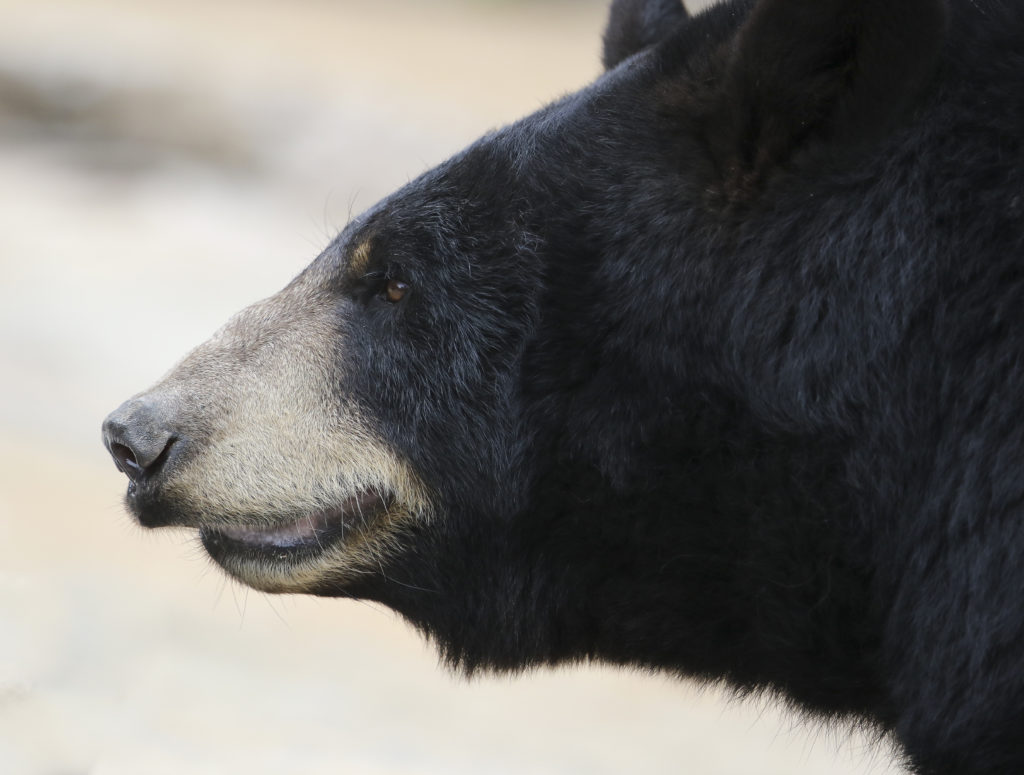A Visit to Bear Country

By Wayne Bierbaum
This spring, I took a trip to the mountains of western Virginia. A friend of mine has a house at the bottom of several wooded hills. I probably walked at least 5 miles a day, exploring the hills and valleys of the area.
While taking these walks, I saw large rocks that had been flipped over or moved, logs that had been rolled over, and claw marks on the trunks of trees. I was definitely in bear country.
On a walk with my friend, we went toward a scenic high spot where the boulders are larger than cars, but we stopped 30 yards short because there was fresh bear scat on the trail. The large boulders could potentially be a denning area, so we made loud noises and promptly left. I was not particularly anxious about the potential presence of bears but I did not want to accidentally corner one among the rocks.
Black bears are the only bears found in Maryland. They are abundant and widespread across the U.S. and can be found in the western part of the country living near the larger brown bear. Black bears also live in Florida and the desert southwest.
Bears are common in the mountainous areas of Maryland and Virginia. Property damage by bears is a common occurrence but physical attacks are rare. No fatal bear attacks are listed as having occurred in Virginia and just two attacks have occurred in the last 20 years in Maryland. The last bear sighting that I could find in Anne Arundel County was in 2008 when an 18-month-old male roamed through the southern portion of the county and was eventually captured with a tranquilizer gun in Arbutus.
Maryland DNR estimates that there are about 2,000 adult black bears in Maryland. In 2020, DNR issued 950 bear hunting permits and 117 bears were killed. In 2021, 54 bears were harvested.
Bears are generally nocturnal but they have periods of high activity when they are more active during the day—making encounters with humans more likely. Both high activity periods have to do with food. In the spring, bears have just become active after hibernation. They have used up most of their body’s stored energy, in the form of body fat, and need to eat a lot to replenish it. During this time they are grazers and will eat flowers, spring grasses, dandelions, clover and other new growth, but it does take a lot to fill their protein needs. This is when we see bears leaving the woods and venturing into fields. Spring is also the time when the cubs leave the den to travel with their mothers. Even though the bear cubs are cute, they must be avoided, as a very protective mother will be nearby.
Cubs will stay with their mother for over a year, so it happens that spring is also the time that 16-month-old cubs are being pushed away by their mother and will start traveling to find welcoming territory, as was the case with the young bear spotted in 2008 in Anne Arundel County.
In the summer, the bears are mostly nocturnal and are less often spotted during the day, but their garbage and bird feeder raids in the summer are well documented.
In the fall, bears are once again active during the day. It’s time for them to get ready for winter by adding fat. They are looking for a large volume of food and will be active day or night. Since the cubs will be less frail, there is less danger of having an encounter with a mother. This is also when activity around homes and camps increases again. A poor acorn season, such as in 2020, will cause bears to venture closer to humans and their food.
I have had several adventures into bear country and have been advised each time on how to handle close encounters. Bears are fast and will shift into predator mode if you turn your back and run. Run only if you can get to safety within a short distance. I have been advised to back away but make yourself large and make lots of loud noise while doing so.
If you have bear spray don’t wait too long to use it and aim at the bear’s feet rather than above the bear. It is better to miss low than high—the mist will swirl off the ground and the bear will inhale it. Throwing rocks and having a big stick to jab at the bear helps. Jettison all food-like material: wrappers, gum, containers, soft drinks, etc. If you are attacked, the best thing to do is to play dead. A bear is likely to keep attacking if you fight back or struggle. A woman in Frederick County who was attacked by a bear in 2020 was released once she went limp.
Bears are interesting to watch but do so from a distance. The National Forest Service and Yellowstone National Park recommend 100 yards as a safe minimum distance for viewing bears. Enjoy getting out in the wild but trade your selfie stick for a nice telephoto lens.
